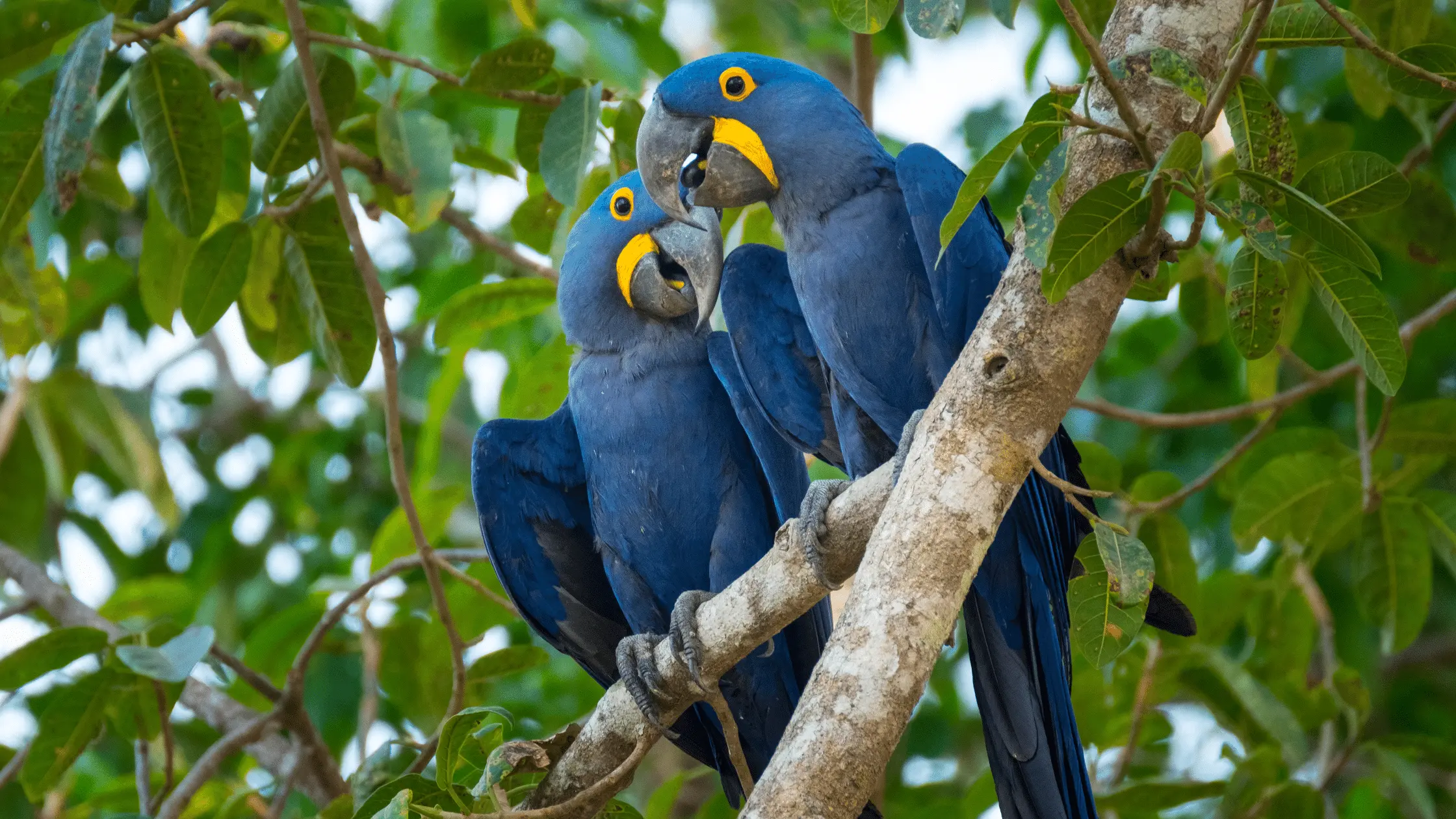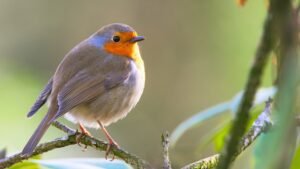Birds have different life spans. While most live between four and ten years, a few live up to a hundred years.
Whether you are a bird enthusiast or just trying to choose the right pet, you will find useful information about the life spans of birds in this article.
Factors That Affect A Bird’s Life Span
Here are some of the factors that determine how long any bird lives.
Size
The size of any bird significantly influences its longevity. Smaller birds usually die off after three years, and on the other hand, larger birds live longer.
There are several reasons for this occurrence. Small birds rank low on the food chain and have many natural predators like reptiles, carnivorous mammals, and even bigger birds.
Bigger birds have fewer natural predators since they are higher up the food chain. Also, smaller birds can succumb to harsh weather conditions due to their body size.
Biological Make-up
Many birds are naturally equipped with defense mechanisms to minimize the threat of harsh weather conditions and natural predators. Some birds rely on their dense feathers to stay warm in extreme weather, and others migrate to warmer climes.
Also, many small birds possess colorful plumage that allows them to hide from predators by blending in with their surroundings. Meanwhile, larger birds have strong beaks and sharp claws they can use to fight off their attackers.
Injuries
Birds can get injured by several means, and they could fall from their nests or collide with other objects while in flight. Predators or courtship rivals could also attack birds.
Not every injury is life-threatening, but certain injuries could hinder a bird’s movement. Hence, it would be unable to forage or escape from predators.
Feeding Habits
A bird’s primary diet influences its life expectancy to a large extent. Birds that feed mainly on flesh tend to live longer than herbivorous birds.
Also, the risk birds face in trying to access their preferred meal affects their span. Many flesh-eating birds often fall prey to bigger birds while hunting.
Locality
A bird’s host region determines the climate as well as the availability of food. Birds that reside in colder areas are known to live longer than their counterparts in warmer climes.
Also, birds living on islands have longer life spans than mainland birds.
How You Can Tell A Bird’s Life Span
You can easily compare the life spans of two or more different birds by observing some behavioral traits.
Reproductive Habits
Birds with shorter life spans lay more eggs, and they also breed several times a year and have shorter incubation periods.
The major reason is that these birds die within a few years and need to produce a lot of young birds to balance the ecosystem. Giving birth to and caring for many chicks significantly affects a bird’s health.
Maturity Rate
Birds with shorter life span usually attain full maturity within a few months. Many small birds only require a few weeks before they are fully developed.
On the other hand, birds with longer life spans need more than a year to reach adulthood.
Choice Of Shelter
Birds that build nests above the ground have longer life spans because they hardly fall prey.
Birds That Have The Longest Life Spans
Owl Parrot

Also known as Kākāpō, the owl parrot is a flightless parrot found in New Zealand. Typically, these birds live for 40-80 years, making them one of the longest-living birds.
Laysan Albatross

The Laysan albatross lives for about 10 to 40 years, and many of these species live up to 65 years and beyond.
The Hyacinth Macaw

The hyacinth macaw is a unique parrot species known for being the biggest flying parrot. These birds live for up to 50 years in the wild and can live slightly longer in captivity if trained in good conditions.
Arctic Terns

Arctic Terns are naturally long-lived; the oldest recorded Arctic Tern lived for up to 34 years. However, the average lifespan of this bird is between 10-25 years, as most do not reach 30 years.
Red-Tailed Hawks

Re-tailed hawks live up to 20 years. A few are known to live beyond 25. Though these birds have long lifespans, certain factors can affect how long they live. The oldest known Red-tailed hawk lived for 30 years.
Brown Pelicans

Typically, Brown Pelicans have an average lifespan of 15 years. However, there have been records of a few Pelicans living way longer. The oldest pelican recorded lived up to 43 years, giving us clear insight that these birds can live up to 40 years in favorable conditions.
Great Horned Owls

The great horned owl lives between 12 to 15 years on average. However, a few of them have lived past 25 years.
Birds With The Shortest Lifespans
Buttonquail

The average lifespan of a male button quail is 3-5 years, whereas the females usually live between 2-4 years. There have been records of button quails living up to 9 years; however, it only happens in a rare case scenario.
Canary

On average, a Canary lives between 5-10 years. Though some live way longer than 10, most die between the ages of 5-10, making them one of the birds with the shortest expected lifespan.
Ruby-Throated Hummingbird

Generally, hummingbirds have shorter lifespans. However, among these birds, the Ruby-throated hummingbird has one of the shortest expected lifespans of 3-5 years. There are cases where some of these birds live longer than eight years, but only in rare cases.
Frequently Asked Questions
What Bird Has Lived The Longest?
The oldest recorded bird was a cockatoo named Cookie. Cookie lived in a zoo near Chicago and lived up to 83 years.
Other reports exist of Winston Churchill’s macaw, Charlie. These reports claim that Charlie lived up to 114 years before he passed away.
However, records about the ages of the oldest birds are subject to continuous dispute. Moreover, there might be older birds undiscovered in the wild.
Can I Extend A Bird’s Life?
It is rare to find birds living longer than their natural life span.
However, you can increase the number of years your pet lives by feeding it a healthy diet, providing adequate medical care, and protecting it from natural predators.
Avoid giving your bird food such as coffee, chocolate, or milk. Although some foods do not contain harmful toxins, they could lead to serious health complications and even death in birds.
How Do I Protect My Birds From Parasites?
Birds are naturally neat creatures and regularly preen their feathers to get rid of tiny mites and lice.
However, birds can ingest harmful bacteria and fungi when they eat infected food. These parasites multiply once inside the bird and begin to attack its vital organs.
You can protect your birds from these parasites by storing dry bird food in sealed and sterile containers. Also, refrigerate any nectar solution you prepare until you are ready to use it.
In addition, change the bird food you put in bird feeders regularly, and clean the bird feeder.
What Type Of Food Is Best For Pet Birds?
You do not need to get all fancy with bird food. Bird seeds, fruits, and vegetables contain the essential nutrients birds need.
However, it would help if you fed birds a balanced diet. Feeding your pet with only bird seed will affect the development of their bones.
You can also feed your pets with worms and insects. But ensure that you purchase bugs from only trusted sources.
How Do I Dispose Of A Dead Bird?
Dead birds could lead to the spread of harmful diseases if you do not dispose of them properly.
The hole should be at least two feet deep if you are burying a dead bird. Please do not wrap the carcass in plastic sheeting before you bury it.





